
New York
New York imposes maintenance, training, medical direction, AED placement reporting, post-event reporting and other requirements on AED programs. The scope of potentially available Good Samaritan immunity protection is limited to the use of an AED - other AED program activities are not covered. The scope of conduct protected is unclear because of a poorly crafted law. New York mandates AEDs in lots of places including certain health clubs, certain schools, large occupancy environments, certain government managed buildings and other places, bathing beaches, and dentist offices.
Choose a State:
New York Law Key Takeaways
| Requirement | Summary |
|---|---|
| Good Samaritan Law | Liability protection is available to the AED user, prescribing physician, AED trainer, provider, and operator of the AED. |
| AED Location | An AED provider must notify the regional council of the AED's location. |
| Medical Oversight | AED providers must initiate medical oversight program in compliance with a collaborative agreement with an emergency physician or licensed hospital. |
| AED Maintenance | Providers shall assume responsibility for maintenance and testing of the AED according to the AED manufacturer's operational guidelines. |
| AED Training | Anticipated AED users must be trained by the AED provider or operator in CPR/AED. |
| Schools |
Every school must have AEDs and CPR/AED trained personnel in such numbers so as to ensure ready and appropriate access. AEDs and AED-trained employees must be present at all school sponsored activities and athletic contests at any location. Instructions regarding the correct use of an AED shall be included as a part of the health education curriculum in all senior high schools if that senior high school chooses to include CPR training as part of its curriculum. |
| Beaches | Beaches and pools with lifeguards are required to have an AED. |
| State Buildings | State buildings must provide and maintain sufficient number of AEDs and trained AED operators for emergencies. |
| Health Clubs | Health clubs whose membership is five hundred persons or more shall have on the premises at least one automated external defibrillator and shall have in attendance, at all times during staffed business hours, at least one individual who holds a valid certification of completion of a course in the study of the operation of AEDs and a valid certification of the completion of a course in the training of cardiopulmonary resuscitation. |
| Dentist Offices | Dentists should be CPR certified and AEDs should be maintained at dental offices. |
Products to help you stay compliant
New York Statutes and Regulations
*New York Public Health Law -- § 3000-a. Pub. Health. Emergency medical treatment.
1. Except as provided in subdivision six of section six thousand six hundred eleven, subdivision two of section six thousand five hundred twenty-seven, subdivision one of section six thousand nine hundred nine and sections six thousand five hundred forty-seven and six thousand seven hundred thirty-seven of the education law, any person who voluntarily and without expectation of monetary compensation renders first aid or emergency treatment at the scene of an accident or other emergency outside a hospital, doctor's office or any other place having proper and necessary medical equipment, to a person who is unconscious, ill, or injured, shall not be liable for damages for injuries alleged to have been sustained by such person or for damages for the death of such person alleged to have occurred by reason of an act or omission in the rendering of such emergency treatment unless it is established that such injuries were or such death was caused by gross negligence on the part of such person. Nothing in this section shall be deemed or construed to relieve a licensed physician, dentist, nurse, physical therapist or registered physician's assistant from liability for damages for injuries or death caused by an act or omission on the part of such person while rendering professional services in the normal and ordinary course of his or her practice.
2. (i) Any person or entity that purchases, operates, facilitates implementation or makes available resuscitation equipment that facilitates first aid, an automated external defibrillator or an epinephrine auto-injector device as required by or pursuant to law or local law, or that conducts training under section three thousand-c of this article, or (ii) an emergency health care provider under a collaborative agreement pursuant to section three thousand-b of this article with respect to an automated external defibrillator, or (iii) a health care practitioner that prescribes, dispenses or provides an epinephrine auto-injector device under section three thousand-c of this article, shall not be liable for damages arising either from the use of that equipment by a person who voluntarily and without expectation of monetary compensation renders first aid or emergency treatment at the scene of an accident or medical emergency, or from the use of defectively manufactured equipment; provided that this subdivision shall not limit the person's or entity's, the emergency health care provider's, or other health care practitioner's liability for his, her or its own negligence, gross negligence or intentional misconduct.
*New York Public Health Law -- § 3000-b. Pub. Health. Automated external defibrillators: Public access providers.
3. Definitions. As used in this section, unless the context clearly requires otherwise, the following terms shall have the following meanings:
(a) Automated external defibrillator means a medical device, approved by the United States food and drug administration, that:
(i) is capable of recognizing the presence or absence, in a patient, of ventricular fibrillation and rapid ventricular tachycardia;
(ii) is capable of determining, without intervention by an operator, whether defibrillation should be performed on the patient;
(iii) upon determining that defibrillation should be performed, automatically charges and requests delivery of an electrical impulse to the patient's heart; and
(iv) then, upon action by an operator, delivers an appropriate electrical impulse to the patient's heart to perform defibrillation.
(b) Emergency health care provider means
(i) a physician with knowledge and experience in the delivery of emergency cardiac care; or
(ii) a hospital licensed under article twenty-eight of this chapter that provides emergency cardiac care.
(c) Public access defibrillation provider means a person, firm, organization or other entity possessing or operating an automated external defibrillator pursuant to a collaborative agreement under this section.
(d) Nationally-recognized organization means a national organization approved by the department for the purpose of training people in use of an automated external defibrillator.
4. Collaborative agreement. A person, firm, organization or other entity may purchase, acquire, possess and operate an automated external defibrillator pursuant to a collaborative agreement with an emergency health care provider. The collaborative agreement shall include a written agreement and written practice protocols, and policies and procedures that shall assure compliance with this section. The public access defibrillation provider shall file a copy of the collaborative agreement with the department and with the appropriate regional council prior to operating the automated external defibrillator.
5. Possession and operation of automated external defibrillator. Possession and operation of an automated external defibrillator by a public access defibrillation provider shall comply with the following:
(a) No person may operate an automated external defibrillator unless the person has successfully completed a training course in the operation of an automated external defibrillator approved by a nationally-recognized organization or the state emergency medical services council. However, this section shall not prohibit operation of an automated external defibrillator,
(i) by a health care practitioner licensed or certified under title VIII of the education law or a person certified under this article acting within his or her lawful scope of practice;
(ii) by a person acting pursuant to a lawful prescription; or
(iii) by a person who operates the automated external defibrillator other than as part of or incidental to his or her employment or regular duties, who is acting in good faith, with reasonable care, and without expectation of monetary compensation, to provide first aid that includes operation of an automated external defibrillator; nor shall this section limit any good samaritan protections provided in section three thousand-a of this article.
(b) The public access defibrillation provider shall cause the automated external defibrillator to be maintained and tested according to applicable standards of the manufacturer and any appropriate government agency.
(c) The public access defibrillation provider shall notify the regional council of the existence, location and type of any automated external defibrillator it possesses.
(d) Every use of an automated external defibrillator on a patient shall be immediately reported to the appropriate local emergency medical services system, emergency communications center or emergency vehicle dispatch center as appropriate and promptly reported to the emergency health care provider.
(e) The emergency health care provider shall participate in the regional quality improvement program pursuant to subdivision one of section three thousand four-a of this article.
(f) The public access defibrillation provider shall post a sign or notice at the main entrance to the facility or building in which the automated external defibrillator is stored, indicating the location where any such automated external defibrillator is stored or maintained in such building or facility on a regular basis.
6. Application of other laws.
(a) Operation of an automated external defibrillator pursuant to this section shall be considered first aid or emergency treatment for the purpose of any statute relating to liability.
(b) Operation of an automated external defibrillator pursuant to this section shall not constitute the unlawful practice of a profession under title VIII of the education law.
*New York Public Health Law -- § 225. Pub. Health. Public health and health planning council; powers and duties; sanitary code.
5-b. Places of public assembly on-site cardiac automated external defibrillator.
(a) Notwithstanding the provisions of paragraph (r) of subdivision five of this section, the sanitary code shall provide that each place of public assembly shall provide and maintain on-site automated external defibrillators (AED), as defined in paragraph (a) of subdivision one of section three thousand-b of this chapter, in quantities and types deemed by the commissioner to be adequate to ensure ready and appropriate access for use during emergencies.
(b) Whenever places of public assembly are used for public or private sponsored events or activities the owners, operators and administrators responsible for such place of public assembly shall ensure the presence of at least one staff person or volunteer who is trained, pursuant to paragraph (a) of subdivision three of section three thousand-b of this chapter, in the operation and use of an AED.
(c) For the purposes of this subdivision places of public assembly shall be those with an occupancy capacity of at least one thousand people and shall include: (i) all stadiums, ballparks, gymnasiums, field houses, arenas, civic centers and similar facilities used for the conduct of sporting events; and (ii) concert halls, recital halls, theatres, indoor and outdoor amphitheatres or other auditoriums used for the presentation of musical renditions or concerts. Places of public assembly shall not include halls owned by churches, religious organizations, granges, public associations, or free libraries as defined by section two hundred fifty-three of the education law.
(d) Places of public assembly and staff pursuant to paragraphs (a) and (b) of this subdivision shall be subject to the requirements and limitations of section three thousand-b of this chapter.
(e) Pursuant to sections three thousand-a and three thousand-b of this chapter, any public access defibrillation provider, or any employee or other agent of the provider who, in accordance with the provisions of this section, voluntarily and without expectation of monetary compensation renders emergency medical or first aid treatment using an AED which has been made available pursuant to this section, to a person who is unconscious, ill or injured, shall be liable only pursuant to section three thousand-a of this chapter.
(f) Nothing in this subdivision shall be construed to prohibit a political subdivision of the state from continuing to implement and enforce any local law or regulation related to the placement of automated external defibrillators in places of public assembly as defined in this subdivision, in effect prior to the effective date of this subdivision. Where a political subdivision has a local law in effect prior to the effective date of this subdivision, the provisions of this subdivision shall have no force and effect until such time as the political subdivision repeals its local law.
**New York General Business Law -- Article 12-C. Trampoline Park Safety.
§ 223. Trampoline park employee training, equipment and supervision.
An owner and/or operator [of a trampoline park] shall:
7. ensure that during all hours of operation the trampoline park has an operable automated external defibrillator;
8. ensure that all employees are certified in first aid and CPR;
9. ensure that all participants are instructed by an employee about the potential risks and safety guidelines;
10. require that trampoline park employees monitor the trampoline court and participants during all hours of operation;
11. ensure that the number of trampoline park employees described in subdivision four of this section is adequate to view each area of the trampoline court; and
12. prominently display throughout the trampoline park contrasted safety, warning, advisory, and instructional signage reflecting the trampoline park's rules as provided for in section two hundred twenty-seven of this article.
* *
Effective April 18, 2020
*New York General Business Law -- § 621. Gen. Bus. Definitions.
13. “Contract for services.” As used in this article, a contract for services means a contract for consumer services for instruction, training or assistance in bodybuilding, exercising, weight reducing, figure development, the martial arts to include, judo, karate and self-defense, or any similar course of physical training to be provided for the future use by a consumer of the facilities providing the foregoing instruction, training or assistance; or for membership in any group, club, association or organization for any of the above purposes; except however, that a contract for services shall not mean or include:
(a) Membership in any group, club, association or organization which provides any of the foregoing services and which is organized pursuant to the provisions of the not-for-profit corporation law; or
(b) Boarding accommodations; or
(c) Travel arrangements contracted for less than one year in advance; or
(d) Contracts which incorporate warranties of services or repair given in conjunction with appliances or other goods, where the sale of goods is the primary object of the contract; or
(e) Services by a college or university chartered by the university of the state of New York, a secondary school, an elementary school, a nursery school or kindergarten; and
(f) Contracts for services to provide instruction, training or assistance to acquire a vocation or skill conducted in a training school or by home study.
(g) Contracts for programs which provide instruction for improving tennis skills, and are of eight weeks duration or less where the full fee does not exceed two hundred fifty dollars.
(h) Contracts relating solely to the seasonal use of tennis facilities.
14. “Health club” as used in this article means any person, firm, corporation, partnership, unincorporated association, or other business enterprise offering instruction, training or assistance or the facilities for the preservation, maintenance, encouragement or development of physical fitness or well being. Such term shall include but shall not be limited to health spas, sports, tennis, racquet ball, platform tennis and health clubs, figure salons, health studios, gymnasiums, weight control studios, martial arts and self-defense schools or any other similar course of physical training.
15. “Secretary” as used in this article shall mean the secretary of state.
16. “Seller” as used in this article means any person, firm, corporation, partnership, unincorporated association or other business enterprise which operates or intends to operate a health club.
17. “Buyer” as used in this article means any individual who enters into a contract for services with a health club.
18. “Cardiopulmonary resuscitation” or “CPR” as used in this article means measures, as specified in regulations promulgated by the commissioner of health, to restore function or support ventilation in the event of a cardiac or respiratory arrest. Cardiopulmonary resuscitation shall not include measures to improve ventilation and cardiac functions in the absence of an arrest.
19. “Automated external defibrillator” or “AED” as used in this article means a medical device approved by the federal food and drug administration that (a) is capable of recognizing the presence or absence in a patient of ventricular fibrillation and rapid ventricular tachycardia; (b) is capable of determining, without intervention by an operator, whether defibrillation should be performed on the patient; (c) upon determining that defibrillation should be performed, automatically charges and requests delivery of an electrical impulse to the patient's heart; and (d) upon action by an operator, delivers an appropriate electrical impulse to the patient's heart to perform defibrillation.
*New York General Business Law -- § 627-a. Gen. Bus. Automated external defibrillator requirements.
20. Every health club as defined under paragraph b of subdivision one of section three thousand-d of the public health law whose membership is five hundred persons or more shall have on the premises at least one automated external defibrillator and shall have in attendance, at all times during staffed business hours, at least one individual performing employment or individual acting as an authorized volunteer who holds a valid certification of completion of a course in the study of the operation of AEDs and a valid certification of the completion of a course in the training of cardiopulmonary resuscitation provided by a nationally recognized organization or association.
21. Health clubs and staff pursuant to subdivision one of this section shall be deemed a “public access defibrillation provider” as defined in paragraph (c) of subdivision one of section three thousand-b of the public health law and shall be subject to the requirements and limitation of such section.
22. Pursuant to sections three thousand-a and three thousand-b of the public health law, any public access defibrillation provider, or any employee or other agent of the provider who, in accordance with the provisions of this section, voluntarily and without expectation of monetary compensation renders emergency medical or first aid treatment using an AED which has been made available pursuant to this section, to a person who is unconscious, ill or injured, shall be liable only pursuant to section three thousand-a of the public health law.
*New York Education Law -- § 804-d. Educ. Automated external defibrillator instruction.
Instructions regarding the correct use of an automated external defibrillator shall be included as a part of the health education curriculum in all senior high schools when cardiopulmonary resuscitation instruction is being provided as authorized by section eight hundred four-c of this article. In addition to the requirement that all teachers of health education shall be certified to teach health, persons instructing pupils in the correct use of automated external defibrillators shall possess valid certification by a nationally recognized organization or the state emergency medical services council offering certification in the operation of an automated external defibrillator and in its instruction.
*New York Education Law -- § 917. Educ. On-site cardiac automated external defibrillator.
1. School districts, boards of cooperative educational services, county vocational education and extension boards and charter schools shall provide and maintain on-site in each instructional school facility automated external defibrillator (AED) equipment, as defined in paragraph (a) of subdivision one of section three thousand-b of the public health law, in quantities and types deemed by the commissioner in consultation with the commissioner of health to be adequate to ensure ready and appropriate access for use during emergencies.
2. Whenever public school facilities pursuant to subdivision one of this section are used for school sponsored or school approved curricular or extracurricular events or activities and whenever a school-sponsored athletic contest is held at any location, the public school officials and administrators responsible for such school facility or athletic contest shall ensure the presence of at least one staff person who is trained, pursuant to paragraph (a) of subdivision three of section three thousand-b of the public health law, in the operation and use of an AED. Where a school-sponsored competitive athletic event is held at a site other than a public school facility, the public school officials shall assure that automated external defibrillator equipment is provided on-site.
3. Public school facilities and staff pursuant to subdivisions one and two of this section shall be deemed a “public access defibrillation provider” as defined in paragraph (c) of subdivision one of section three thousand-b of the public health law and shall be subject to the requirements and limitations of such section.
4. Pursuant to section three thousand-a and three thousand-b of the public health law, any public access defibrillation provider, or any employee or other agent of the provider who, in accordance with the provisions of this section, voluntarily and without expectation of monetary compensation renders emergency medical or first aid treatment using an AED which has been made available pursuant to this section, to a person who is unconscious, ill or injured, shall be liable only pursuant to section three thousand-a of the public health law.
*New York Education Law, § 6611. Educ. Special provisions.
Each dentist and registered dental hygienist working for a hospital as defined in article twenty-eight of the public health law who practices in collaboration with a licensed dentist shall become certified in cardiopulmonary resuscitation (CPR) from an approved provider and thereafter maintain current certification, which shall be included in the mandatory hours of continuing education acceptable for dentists to the extent provided in the commissioner's regulations. In the event the dentist or registered dental hygienist cannot physically perform CPR, the commissioner's regulations shall allow the dentist or registered dental hygienist to make arrangements for another individual in the office to administer CPR. All dental facilities shall have an automatic external defibrillator or other defibrillator at the facility.
*New York Public Buildings Law -- § 140. Pub. Bldgs. Fire and emergency protection in public buildings.
2. Subject to regulations promulgated pursuant to this subdivision, it shall be an additional duty of each such superintendent or chief executive officer of each of the public institutions and buildings of the state to equip each such building with an automated external defibrillator. The commissioner of general services shall promulgate regulations providing for a phase-in schedule of the duty created by this section. Such regulations shall address the appropriate number of automated external defibrillators for such buildings, based on the size or occupancy of the buildings; the training of personnel and use of such automated external defibrillator; and any other matter deemed necessary by such commissioner to effectuate the duty prescribed by this section.
3. The moneys necessary to carry out the provisions of this section shall be supplied from the moneys annually appropriated for the maintenance of the above described institutions.
***New York Codes Rules and Regulations -- 8 NYCRR 136.4. On-site cardiac automated external defibrillators.
(a) Definitions. As used in this section:
(1) automated external defibrillator means a device as defined in Public Health Law, section 3000-b(1)(a);
(2) instructional school facility means a building or other facility maintained by a school district, a board of cooperative educational services, a county vocational education and extension board or a charter school where instruction is provided to students pursuant to its curriculum;
(3) school-sponsored or school-approved curricular or extracurricular events or activities means events or activities of a school district, a board of cooperative educational services, a county vocational education and extension board or a charter school that are, respectively, associated with its instructional curriculum or otherwise offered to its students;
(4) school-sponsored athletic contest means an extraclass intramural athletic activity of instruction, practice and competition for pupils in grades 4 through 12 consistent with section 135.4 of this Title.
(5) school-sponsored competitive athletic event means an extraclass interschool athletic activity of instruction, practice and competition for pupils in grades 7 through 12 consistent with section 135.4 of this Title.
(b) Each school district, board of cooperative educational services, county vocational education and extension board and charter school shall provide and maintain on-site in each instructional school facility functional cardiac automated external defibrillator equipment for use during emergencies. Each such facility shall have sufficient automated external defibrillator equipment available to ensure ready and appropriate access for use during emergencies. In determining the quantity and placement of automated external defibrillators, consideration shall be given to:
(1) the number of students, staff and other individuals that are customarily or reasonably anticipated to be within such facility; and
(2) the physical layout of the facility, including but not limited to:
(i) location of stairways and elevators;
(ii) number of floors in the facility;
(iii) location of classrooms and other areas of the facility where large congregations of individuals may occur; and
(iv) any other unique design features of the facility.
(c) Whenever an instructional school facility is used for a school-sponsored or school-approved curricular or extracurricular event or activity, the public school officials and administrators responsible for such facility shall ensure the presence of at least one staff person who is trained, pursuant to Public Health Law, section 3000-b(3)(a), in the operation and use of an automated external defibrillator.
(d) During any school-sponsored athletic contest or school-sponsored competitive athletic event held at any location, public school officials and administrators responsible for such contest or event shall ensure that automated external defibrillator equipment is provided on-site and that at least one staff person who is trained, pursuant to Public Health Law, section 3000-b(3)(a), in its use is present during such contest or event.
(e) Each automated external defibrillator device shall be approved by the Food and Drug Administration for adult use and/or for pediatric use, as appropriate for the population reasonably anticipated to be served by such device, and shall be used according to the manufacturer's instructions with due attention provided to operating procedures, maintenance and expiration date.
**New York Codes Rules and Regulations -- 9 NYCRR 303.0. Purpose.
The regulations contained in this Part have been promulgated by the Office of General Services (OGS) pursuant to section 140 of the Public Buildings Law, which requires that each public building be equipped with on-site cardiac automated external defibrillators. The purpose of this regulation is to provide for the installation and safe operation of a sufficient number of cardiac automated external defibrillators in each public building and to enable prompt response to human cardiac events that may occur in such public buildings.
**New York Codes Rules and Regulations -- 9 NYCRR 303.1. Definitions.
(a) As used in this section:
(1) Automated external defibrillator, or AED. A device as defined in Public Health Law (PHL) section 3000-b(1)(a).
(2) Public building. A building or portion thereof located within the State of New York that is owned and/or operated by a State agency, including leased space, for the conduct of governmental services and which houses:
(i) a staff of State employees;
(ii) other intended occupants; or
(iii) regular visitors, excluding any building that has limited use or a nominal number of assigned staff as determined by the respective State agency.
(3) State agency or agency. All State departments, boards, commissions, offices or institutions. State public authorities and public benefit corporations are excluded from this definition.
(4) Collaborative agreement. A written agreement with an emergency health care provider (EHCP), which shall include a copy of an agency's written practice protocols and policies and procedures for use of AEDs, as provided for in Public Health Law, section 3000-b(2).
(5) Emergency health care provider, or EHCP. A physician or a hospital as defined in Public Health Law, section 3000-b(1)(b).
(6) Regional emergency medical services council(s), or REMSCO. An organization as defined in Public Health Law, section 3003.
(7) Commissioner. The commissioner of the New York State Office of General Services or his/her designee.
(8) OGS. The New York State Office of General Services.
(9) DOH. The New York State Department of Health.
**New York Codes Rules and Regulations -- 9 NYCRR 303.2. Implementation.
(a) Each State agency shall comply with the provisions of Public Health Law, section 3000-b.
(b) Each State agency shall endeavor to provide and maintain on-site at each of its public buildings a sufficient number of functional cardiac AED devices, and shall endeavor to provide a sufficient number of trained AED operators for emergencies, in accordance with these regulations, unless conditions exist in a certain structure that prevent a State agency from reasonably complying with the requirements of these regulations.
(c) Each agency will be responsible for the phased-in installation of AEDs in its respective facilities. Such phase-in period shall not extend beyond March 31, 2010, absent extraordinary circumstances that warrant a longer phase-in period. Any such extraordinary circumstances resulting in exemption from or noncompliance with these regulations shall be detailed in the agency's report pursuant to subdivision (h) of this section.
(d) In the event that a specific building space is shared between agencies, then memoranda of understanding (MOU) may be made between such agencies relative to the development and funding of an AED program for the shared space, as well as the joint administration of all aspects of the AED program.
(e) Notwithstanding any other provision of this Part, a State agency is located in building space owned or managed by OGS, OGS will be responsible for installing AEDs in the building and for managing AED maintenance and AED operator training. Otherwise, it shall be the responsibility of the agency occupying OGS space to comply with all other provisions of this Part, including recruiting agency personnel as AED operators and coordinators.
(f) In the case of public buildings owned and/or managed by an agency other than OGS, or public buildings managed by OGS by virtue of an agreement with another agency or a private entity, the occupying agencies will be responsible for the installation of AEDs in the building and for the management of AED maintenance and AED operator training.
(g) If an agency operates a medical facility that provides alternative services for the purpose of addressing emergency defibrillation, that agency shall file with the commissioner a written notification explaining how the medical facility addresses emergency defibrillation in a sufficient manner so as to be consistent with the health and safety objectives of these regulations. Agencies operating such an alternative services plan which has been approved by DOH will be deemed to have fulfilled the requirements of sections 303.5, 303.6, 303.7, and 303.8 of this Part respecting the public buildings at which the alternative services plan is effective. Upon receipt of such written notification(s), the commissioner will provide the agency with an acknowledgment of receipt, and will also provide a copy of such written notification(s) to DOH.
(h) From the date of adoption of these regulations, each State agency shall commence the planning process for implementation of an AED program. By April 1, 2006 all State agencies shall file with the commissioner a written report setting forth the details of the agency's AED program plan. The report shall include specific reference to the individual requirements set out in these regulations, including, but not limited to, a proposed schedule for implementation at each public building. If an agency has previously commenced an AED program in its buildings, then that agency's report should identify those buildings that currently have AEDs and should demonstrate how those buildings comply with the standards promulgated in these regulations. All such reports shall be updated annually, commencing April 1, 2007, and shall detail the status of the agency's AED program respecting compliance with these regulations. Once full implementation is achieved, such annual reports shall be required only for years in which substantive changes to the agency's plan or its compliance therewith have developed. Upon receipt of such report(s), the commissioner will provide the agency with an acknowledgment of receipt, and will also provide a copy of such report(s) to DOH. A State agency may commence installation of AEDs prior to submitting its written report to the commissioner.
(i) If during the process of developing its AED program, a State agency is unable to fulfill all the requirements of these regulations at its public buildings as a result of insufficient staff or other restrictive conditions, a written report explaining the reasons for such circumstances shall be provided to the commissioner. A State agency shall include in such report an alternative implementation program designed to provide AED protection at the public building(s) referenced in the report or an explanation as to why there is no feasible method of implementing an AED program for the subject public building(s). The filing of such an explanatory report shall temporarily suspend an agency's obligation to fulfill other requirements of this Part for such public building(s) until the underlying prohibitive condition(s) may be corrected. Upon receipt of such report(s), the commissioner will provide the agency with an acknowledgment of receipt, and will also provide a copy of such report(s) to DOH.
**New York Codes Rules and Regulations -- 9 NYCRR 303.3. Location of AEDs.
(a) Subject to the phased-in implementation of AEDs, each State agency shall endeavor to have sufficient AEDs available at each of its public buildings to ensure ready access for use during emergencies.
(1) Each State agency's phased-in implementation plan shall commence by prioritizing AED placement in those public buildings that house the largest number of State employees, other intended occupants or estimated regular visitors, or which the State agency reasonably deems to merit priority treatment due to the high risk nature of the population served or the activities conducted at the public building.
(2) When prioritizing AED placement as described in paragraph (1) of this subdivision, those public buildings where there is a greater level of physical activity or in which a higher occupant density is likely shall be given priority for AED placement over public building(s) that have a lower level of physical activity or lower likely levels of occupant density.
(3) Public buildings housing a staff, other intended occupants or regular visitors of 100 people or more shall be considered priority structures for the implementation of an AED program.
(b) After a State agency has prioritized its public buildings for purposes of implementing an AED program, the agency shall determine the quantity and placement of AEDs. In implementing the physical placement of the AEDs, consideration shall be given to the size and physical layout of the public building, including but not limited to the following factors:
(1) placement of AEDs in centralized locations based upon the response system an agency has established in its PAD plan, or mobile deployment of AEDs (e.g., placement of AEDs in emergency vehicles), such that a trained operator could optimally respond to the site of a cardiac event with an AED at or about an agency's public building(s) in a period of not more than three minutes;
(2) locations of stairways and elevators;
(3) number of floors in the facility;
(4) security features that limit access or restrict freedom of movement to certain areas of a building;
(5) conspicuous location for AED access and retrieval; and
(6) protection of the AED against accidental physical damage, tampering or theft.
(c) AEDs should not be located in locked rooms or where access is restricted, unless the AED is meant to be an additional device or is secondary to the AEDs installed for regular daily access. Notwithstanding the foregoing, where placement of an AED may be problematic due to security or other safety considerations, or where the combined logistics of building design, risk level and operator availability reasonably indicates a secure AED placement, the State agency may consider alternate installations that are as consistent as possible with these rules and regulations.
(d) An agency shall consider AED options for children in those State facilities that are regularly open to the public, e.g., museums, convention centers, recreational/sport facilities. Appropriate AED equipment options should be acquired and made available for resuscitating children in accordance with AED manufacturer's recommendations.
**New York Codes Rules and Regulations -- 9 NYCRR 303.4. Operators.
(a) State officers and employees charged with management of public buildings should endeavor to recruit volunteers or, in appropriate circumstances, assign employees, in compliance with the applicable collective bargaining agreements and relevant Labor Law provisions, as part of their official job duties to operate AEDs, such that there are optimally not less than two operators per each AED or, in multiple floor buildings, two operators per floor, whichever is greater, which operators are trained in the operation and use of an AED and whose regular workstations are located in proximity of AEDs such that they may be able to comply with the response time described in section 303.3(b)(1) of this Part.
(b) Operator training shall include a combination of both CPR and AED training. An AED operator is required to successfully complete a CPR/AED training class at intervals necessary to maintain certification.
(c) Agencies shall select and pay for a training provider approved by DOH for purposes of training employees to both administer CPR and use AEDs, consistent with the provisions of Public Health Law, section 3000-b(3)(a). The successful completion of an approved CPR/AED training course shall be a prerequisite to being considered by an agency for designation as an authorized AED operator.
(d) Agencies may determine where and how an operator receives his/her CPR/AED training, if such training is scheduled during the employee's regular workday. An operator that receives his/her CPR/AED training outside of the employee's regular workday will be eligible for reimbursement for the cost of the training so long as the provider is approved by DOH and the operator receives prior approval from the agency.
(e) All activities pursuant to this Part of all operators, coordinators, and administrators, and any designees thereof, whether such persons are acting as volunteers or by virtue of their assigned work responsibilities, shall be considered to be within the scope of the subject State employees' employment with the State of New York. The activities contemplated in this subdivision include all those contained in this Part, including but not limited to the location, operation, maintenance and testing of AED equipment, as well as the administrative and ministerial functions, and any other activity implied or reasonably necessary to the effective provision, operation and administration of a Public Access Defibrillation Program. Pursuant to the provisions of section 17 of the Public Officers Law, operators, coordinators, and administrators who are volunteers and not State employees shall be eligible for defense and indemnification by the State in their activities pursuant to this Part upon their express authorization by the respective State agency to participate in the volunteer component of this State sponsored Public Access Defibrillation Program.
**New York Codes Rules and Regulations -- 9 NYCRR 303.5. AED administration.
(a) Each State agency shall designate an AED administrator for its respective agency-wide AED program. The AED administrator shall be an agency employee who is primarily responsible for administering and monitoring the agency's AED program, which shall include oversight of the AED coordinators to insure that each coordinator fulfills his/her responsibilities as set forth in this section. The AED administrator shall maintain a copy of the agency's written AED plan.
(b) Each State agency shall designate an AED coordinator for each of its public buildings or for portions of buildings it occupies. The AED coordinator shall be an agency employee who is the primary liaison between the agency's AED program and the EHCP.
(1) The AED coordinator is responsible for:
(i) maintaining the equipment and supplies;
(ii) organizing training and re-training programs;
(iii) maintaining a list of trained designated AED operators, or monitoring such tasks if performed by the AED vendor or other third party;
(iv) forwarding incident data to the EHCP for medical director review; and
(v) holding post-incident debriefing sessions for any responder(s) involved, if necessary.
(2) The AED coordinator shall hold an annual AED drill with the AED operators.
(3) The AED coordinator may be responsible for more than one building, and in circumstances determined by an agency to be appropriate, the AED coordinator may be responsible for buildings on a regional or geographic basis.
(4) The AED coordinator may also serve as an AED operator.
**New York Codes Rules and Regulations -- 9 NYCRR 303.6. AED equipment.
(a) Prior to purchasing AEDs and related equipment, and based upon the provisions of its AED program plan, each State agency should determine the appropriate number of AEDs and should recruit or assign sufficient AED operators for each of its public buildings. Purchase of AED units shall be made pursuant to the State Finance Law or other applicable governing law.
(b) Each AED shall be a device approved by the Food and Drug Administration for adult use and/or for pediatric use, as appropriate for the population reasonably anticipated to be served by such device, and shall be installed and used according to the manufacturers instructions with due attention provided to operating procedures, maintenance and expiration date(s). AEDs are federally regulated medical devices, and can only be purchased with a physician's prescription. Such physician's prescription should be obtained from the agency's EHCP.
(c) Each agency shall have the AEDs placed in their assigned locations within each of the agency's facilities and shall ensure that trained AED operators for each facility are informed as to the locations of the AEDs. Manufacturers' directions should be followed for all AED installations and use.
(d) All AED coordinators, or their designees, shall use their reasonable best efforts to provide that all AEDs in their facilities shall be maintained and inspected according to agency policy, manufacturers' and applicable Federal and State government standards.
(e) All AED coordinators, or their designees, shall use their reasonable best efforts to perform or otherwise arrange for an inspection, on a regular basis not less frequently than recommended by the AED manufacturer, to check the AED supplies, accessories and spares for expiration dates and damage, and test the functionality of each AED. Such inspection should include the AED exterior and the connector.
**New York Codes Rules and Regulations -- 9 NYCRR 303.7. Medical support.
(a) A State agency possessing or operating an AED is required to have a collaborative agreement with an emergency health care provider as defined in Public Health Law, section 3000-b(2).
(b) For each public building being considered for AED placement, an agency shall:
(1) identify its local REMSCO. A list of REMSCOs located in the State of New York is maintained by DOH;
(2) identify a physician or hospital knowledgeable and experienced in emergency cardiac care to serve as the EHCP and to participate in a collaborative agreement with the State agency;
(3) develop a written collaborative agreement with the EHCP, which shall include a copy of written practice protocols for use of the AEDs, together with written policies and procedures which together: provide training requirements for AED operators; direct the immediate calling of 911 in event of each emergency cardiac event; provide ready identification of AED unit locations; provide for regular maintenance and testing procedures of the AED unit(s) which procedures meet or exceed manufacturers recommendations; detail documentation requirements pertaining to AED usage; and define participation in a regionally approved quality improvement program as required by sections 3000-b(3)(e) and 3004-a(1) of the Public Health Law;
(4) consistent with the requirements of Public Health Law, section 3000-b(2), file with DOH and appropriate REMSCO a copy of the notice of intent to provide public access defibrillation (PAD), and a signed copy of the collaborative agreement with the EHCP. The EHCP and the agency's AED administrator must sign the notice of intent and the collaborative agreement. An agency should file a new collaborative agreement with the DOH and appropriate REMSCO if the EHCP changes. The agency should endeavor to secure written confirmation from the REMSCO of its receipt of the agency's PAD plan. A copy of the PAD plan shall be maintained by the agency's AED administrator. Copies of all such notices, agreements, and confirmations shall also be provided to the commissioner and the chairs of the subject agency's labor and management and health and safety committees. Upon receipt of such notices, agreements, and confirmations, the commissioner will provide the agency with an acknowledgment of receipt;
(5) refrain from operating AEDs until the agency's PAD plan has been formally approved by a REMSCO; and
(6) provide written notice to 911 or the community equivalent emergency vehicle dispatch center of the availability of AED service at the agency's facility.
**New York Codes Rules and Regulations -- 9 NYCRR 303.8. Responsibilities.
(a) Upon responding to an emergency cardiac event, any AED operator shall:
(1) document each AED use on a patient, including all incident data. All such documentation shall be submitted to the agency's AED coordinator immediately following the AED use; and
(2) following each use, deliver the AED unit to the agency's AED coordinator or inform that person of its location.
(b) Upon receiving notice of an emergency cardiac event or AED use, an AED coordinator shall:
(1) pursuant to the provisions of Public Health Law, section 3000-b(3)(d), immediately report such AED use to the appropriate local emergency medical services system, emergency communications center or emergency vehicle dispatch center, as appropriate, and promptly notify the EHCP and appropriate AED administrator;
(2) ensure that the AED data is downloaded to the designated computer system. For assistance with the data information retrieval, the AED vendor/manufacturer's name and telephone number should be available;
(3) ensure that AED incident data are transmitted to the EHCP for evaluation within 24 hours of the cardiac event;
(4) ensure that the public access defibrillation qualify improvement report is completed by the agency's EHCP or AED user and transmitted to the appropriate REMSCO within five business days of AED use;
(5) use his/her best efforts to check the AED and replace any used supplies as soon as possible following the cardiac event so the AED may be promptly returned to service; and
(6) perform a battery insertion test on the AED to ensure proper operation of the AED prior to its return to service.
(c) AED coordinators shall also be responsible to:
(1) ensure that quarterly reports are submitted to the appropriate REMSCO and the agency's labor and management and health and safety committees, provided that should such reports contain any personal information, such information will be redacted prior to submission to said labor management and health and safety committees; and
(2) perform a battery insertion test on an AED following any battery change.
**New York Codes Rules and Regulations -- 9 NYCRR 303.9. AED replacement schedule.
After the initial installation, a replacement schedule which considers the useful life of the AED units shall be developed by the State agency. The replacement schedule should be updated periodically.
***New York Codes Rules and Regulations -- 8 CRR-NY 100.2. General school requirements.
Pursuant to articles 2, 17 and 65 of the Education Law, instruction in certain subjects in elementary and secondary school shall be provided as follows:
* *
(11) students in senior high schools shall be provided instruction in hands-only cardiopulmonary resuscitation and the use of an automated external defibrillator.
(i) Standards for such instruction shall be based on a nationally recognized instructional program that utilizes the most current guidelines for cardiopulmonary resuscitation and emergency cardiovascular care issued by the American Heart Association or a substantially equivalent organization and be consistent with the requirements of the programs adopted by the American Heart Association or the American Red Cross, and shall incorporate instruction designed to:
(a) recognize the signs of a possible cardiac arrest and to call 911;
(b) provide an opportunity to demonstrate the psychomotor skills necessary to perform hands-only compression cardiopulmo'nary resuscitation; and
(c) provide awareness in the use of an automated external defibrillator.
(ii) Nothing in this paragraph shall prohibit a voluntary course of instruction in comprehensive cardiopulmonary resuscitation provided by a properly certified instructor in cardiopulmonary resuscitation which results in a certificate pursuant to the provisions of Education Law section 804-c. Students who receive such instruction in comprehensive cardiopulmonary resuscitation pursuant to the provisions of Education Law section 804-c shall be deemed to meet the requirements of this paragraph.
(iii) Nothing in this paragraph relating to required instruction in hands-only cardiopulmonary resuscitation and instruction in the use of an automated external defibrillator shall require a licensed teacher to possess certification for such instruction that does not result in certification in cardiopulmonary resuscitation or certification in the operation of an automated external defibrillator and in its instruction.
(iv) A student identified with a disability that precludes his or her ability to participate in hands-only cardiopulmonary resuscitation and the use of an automated external defibrillator may be exempted from the instruction requirement in this paragraph if the student's individualized education program developed in accordance with section 200.4 of this Title or accommodation plan developed pursuant to section 504 of the Rehabilitation Act of 1973 states that the student is physically or cognitively unable to perform the tasks included in the instruction.
***New York Codes Rules and Regulations -- 8 NYCRR 136.4. On-site cardiac automated external defibrillators.
(a) Definitions.
As used in this section:
(1) automated external defibrillator means a device as defined in Public Health Law, section 3000-b(1)(a);
(2) instructional school facility means a building or other facility maintained by a school district, a board of cooperative educational services, a county vocational education and extension board or a charter school where instruction is provided to students pursuant to its curriculum;
(3) school-sponsored or school-approved curricular or extracurricular events or activities means events or activities of a school district, a board of cooperative educational services, a county vocational education and extension board or a charter school that are, respectively, associated with its instructional curriculum or otherwise offered to its students;
(4) school-sponsored athletic contest means an extra class intramural athletic activity of instruction, practice and competition for pupils in grades 4 through 12 consistent with section 135.4 of this Title.
(5) school-sponsored competitive athletic event means an extra class interschool athletic activity of instruction, practice and competition for pupils in grades 7 through 12 consistent with section 135.4 of this Title.
(b) Each school district, board of cooperative educational services, county vocational education and extension board and charter school shall provide and maintain on-site in each instructional school facility functional cardiac automated external defibrillator equipment for use during emergencies. Each such facility shall have sufficient automated external defibrillator equipment available to ensure ready and appropriate access for use during emergencies. In determining the quantity and placement of automated external defibrillators, consideration shall be given to:
(1) the number of students, staff and other individuals that are customarily or reasonably anticipated to be within such facility; and
(2) the physical layout of the facility, including but not limited to:
(i) location of stairways and elevators;
(ii) number of floors in the facility;
(iii) location of classrooms and other areas of the facility where large congregations of individuals may occur; and
(iv) any other unique design features of the facility.
(c) Whenever an instructional school facility is used for a school-sponsored or school- approved curricular or extracurricular event or activity, the public school officials and administrators responsible for such facility shall ensure the presence of at least one staff person who is trained, pursuant to Public Health Law, section 3000-b(3)(a), in the operation and use of an automated external defibrillator.
(d) During any school-sponsored athletic contest or school-sponsored competitive athletic event held at any location, public school officials and administrators responsible for such contest or event shall ensure that automated external defibrillator equipment is provided on-site and that at least one staff person who is trained, pursuant to Public Health Law, section 3000-b(3)(a), in its use is present during such contest or event.
(e) Each automated external defibrillator device shall be approved by the Food and Drug Administration for adult use and/or for pediatric use, as appropriate for the population reasonably anticipated to be served by such device, and shall be used according to the manufacturer's instructions with due attention provided to operating procedures, maintenance and expiration date.
***New York Codes Rules and Regulations -- 10 CRR-NY 6-2.17. Supervision—personnel and equipment. [at bathing beaches].
(b) Lifesaving equipment and safety lines.
(1) Lifesaving equipment shall be readily accessible at all bathing beaches. Minimum equipment shall include:
(i) a first aid kit, which may be any commercially prepared 24-unit kit or, a supply of bandaids, bandage compresses and self-adhering gauze bandages; and a pocket face mask or face shield with a one way valve to assist with CPR;
(ii) at Supervision Level I and IIb bathing beaches: one rescue tube or a torpedo buoy with an attached line for each lifeguard required by this section; a rescue board or lifeboat in compliance with section 6-2.19, item 6.2.1 (board/boat specifications) of this Subpart and a full size commercially available spine board or a spine board six feet long and a minimum 16 inches wide provided with straps to aid in immobilization of a victim and hand holds; and
(a) At ocean surf beaches, at least one automated external defibrillator shall be provided by the operator and maintained on-site. The beach operator shall implement a PAD program as defined in section 6-2.2(i) of this Subpart and maintain the following records on-site for inspection:
(1) a copy of the collaborative agreement between an emergency health care provider and the ocean surf beach operator;
(2) a copy of the notification to the regional emergency medical services council of the existence, location, and type of automated external defibrillator; and
(3) the records of automated external defibrillator maintenance and testing specified by the manufacturer's standards;
(iii) at Supervision Level IV bathing beaches or temporary residence bathing beaches using Supervision Level III in accordance with section 6-2.17(a)(1)(ii) of this Subpart: one U.S. Coast Guard approved ring buoys at least 18 inches in diameter fitted with a quarter- inch diameter line a length of 50 feet, and a reaching pole, 15 feet long.
(2) Each lifeguard stand shall be equipped with a whistle or megaphone, and an umbrella or sunshade.
(3) Elevated lifeguard chair(s) shall be provided at all level I and IIb beaches. A minimum of one chair is required for each 50 yards of supervised beach front or at locations described in the approved safety plan as required by subdivision (c) of this section. Elevated lifeguard chairs shall be located to provide a clear unobstructed view of the bathing area. Where swimming or diving is permitted more than 150 feet from the shoreline, lifesaving patrol boats or offshore lifesaving stations shall be provided.
(4) Safety equipment shall have its function plainly marked, and shall be kept in ready condition.
(5) Floating lines shall mark the boundaries of the swimming, wading and diving areas in accordance with the provisions of section 6-2.19, item 4.7, of this Subpart. Swimming shall be prohibited outside the marked area.
(6) A bathing beach with consistent actual bather use of 500 or more bathers shall have and maintain a readily accessible building for emergency care. This building shall be equipped with an advanced first aid kit and a resuscitator.
*New York Codes Rules and Regulations – Article 30- 3000-3032. Automated external defibrillators.
3000-b. Automated external defibrillators: Public access providers. 1. Definitions. As used in this section, unless the context clearly requires otherwise, the following terms shall have the following meanings:
(a) "Automated external defibrillator" means a medical device, approved by the United States food and drug administration, that: (i) is capable of recognizing the presence or absence, in a patient, of ventricular fibrillation and rapid ventricular tachycardia; (ii) is capable of determining, without intervention by an operator, whether defibrillation should be performed on the patient; (iii) upon determining that defibrillation should be performed, automatically charges and requests delivery of an electrical impulse to the patient's heart; and (iv) then, upon action by an operator, delivers an appropriate electrical impulse to the patient's heart to perform defibrillation.
(b) "Emergency health care provider" means (i) a physician with knowledge and experience in the delivery of emergency cardiac care; or (ii) a hospital licensed under article twenty-eight of this chapter that provides emergency cardiac care.
(c) "Public access defibrillation provider" means a person, firm, organization or other entity possessing or operating an automated external defibrillator pursuant to a collaborative agreement under this section.
(d) "Nationally-recognized organization" means a national organization approved by the department for the purpose of training people in use of an automated external defibrillator.
2. Collaborative agreement. A person, firm, organization or other entity may purchase, acquire, possess and operate an automated external defibrillator pursuant to a collaborative agreement with an emergency health care provider. The collaborative agreement shall include a written agreement and written practice protocols, and policies and procedures that shall assure compliance with this section. The public access defibrillation provider shall file a copy of the collaborative agreement with the department and with the appropriate regional council prior to operating the automated external defibrillator.
3. Possession and operation of automated external defibrillator. Possession and operation of an automated external defibrillator by a public access defibrillation provider shall comply with the following:
(a) No person may operate an automated external defibrillator unless the person has successfully completed a training course in the operation of an automated external defibrillator approved by a nationally-recognized organization or the state emergency medical services council. However, this section shall not prohibit operation of an automated external defibrillator, (i) by a health care practitioner licensed or certified under title VIII of the education law or a person certified under this article acting within his or her lawful scope of practice; (ii) by a person acting pursuant to a lawful prescription; or (iii) by a person who operates the automated external defibrillator other than as part of or incidental to his or her employment or regular duties, who is acting in good faith, with reasonable care, and without expectation of monetary compensation, to provide first aid that includes operation of an automated external defibrillator; nor shall this section limit any good samaritan protections provided in section three thousand-a of this article.
(b) The public access defibrillation provider shall cause the automated external defibrillator to be maintained and tested according to applicable standards of the manufacturer and any appropriate government agency.
(c) The public access defibrillation provider shall notify the regional council of the existence, location and type of any automated external defibrillator it possesses.
(d) Every use of an automated external defibrillator on a patient shall be immediately reported to the appropriate local emergency medical services system, emergency communications center or emergency vehicle dispatch center as appropriate and promptly reported to the emergency health care provider.
(e) The emergency health care provider shall participate in the regional quality improvement program pursuant to subdivision one of section three thousand four-a of this article.
(f) The public access defibrillation provider shall post a sign or notice at the main entrance to the facility or building in which the automated external defibrillator is stored, indicating the location where any such automated external defibrillator is stored or maintained in such building or facility on a regular basis.
4. Application of other laws. (a) Operation of an automated external defibrillator pursuant to this section shall be considered first aid or emergency treatment for the purpose of any statute relating to liability.
(b) Operation of an automated external defibrillator pursuant to this section shall not constitute the unlawful practice of a profession under title VIII of the education law.
*New York Codes Rules and Regulations -- § 17-188. Automated External Defibrillators In Certain Public Places.
§ 17-188 Automated external defibrillators. a. Definitions. For the purposes of this section, the following terms shall have the following meanings:
1. "Automated external defibrillator" means a medical device, approved by the United States food and drug administration, that: (i) is capable of recognizing the presence or absence in a patient of ventricular fibrillation and rapid ventricular tachycardia; (ii) is capable of determining, without intervention by an individual, whether defibrillation should be performed on a patient; (iii) upon determining that defibrillation should be performed, automatically charges and requests delivery of an electrical impulse to a patient's heart; and (iv) upon action by an individual, delivers an appropriate electrical impulse to a patient's heart to perform defibrillation.
2. "Owner or operator" means the owner, manager, operator, or other person or persons having control of a public place.
3. "Public place" means the publicly accessible areas of the following places to which the public is invited or permitted: (i) public buildings maintained by the division of facilities management and construction of the department of citywide administrative services or any successor; (ii) parks under the jurisdiction of the department of parks and recreation identified pursuant to subdivision e of this section; (iii) ferry terminals owned and operated by the city of New York served by ferry boats with a passenger capacity of one thousand or more persons; (iv) nursing homes, as defined in section 2801 of the New York state public health law; (v) senior centers, which include facilities operated by the city of New York or operated by an entity that has contracted with the city to provide services to senior citizens on a regular basis, such as meals and other on-site activities; (vi) golf courses, stadia and arenas; and (vii) health clubs that are commercial establishments offering instruction, training or assistance and/or facilities for the preservation, maintenance, encouragement or development of physical fitness or well-being that have a membership of at least two hundred and fifty people, and which shall include, but not be limited to, health spas, health studios, gymnasiums, weight control studios, martial arts and self-defense schools or any other commercial establishment offering a similar course of physical training.
b. Automated external defibrillators required. Except as provided in subdivision j of this section, the owner or operator of a public place shall make available in such public place automated external defibrillators in quantities and locations deemed adequate in accordance with rules promulgated pursuant to subdivisions e and f of this section and in accordance with section 3000-b of the New York state public health law. Such automated external defibrillators shall be readily accessible for use during medical emergencies. Any information regarding use of automated external defibrillators deemed necessary by the department in accordance with rules promulgated pursuant to subdivision f of this section shall accompany and be kept with each automated external defibrillator. Any automated external defibrillator required pursuant to this subdivision shall be acquired, possessed and operated in accordance with the requirements of section 3000-b of the New York state public health law.
c. Notice required. The owner or operator of a public place shall provide written notice to the public, by means of signs, printed material or other form of written communication, indicating the availability of automated external defibrillators for emergency use in such public place and providing information on how to obtain automated external defibrillator training. The type, size, style, location and language of such notice shall be determined in accordance with rules promulgated by the department pursuant to subdivision f of this section. Should such rules require or allow the posting of signs made available by the department to owners or operators of a public place to serve as appropriate notice pursuant to this subdivision, the department may charge a fee to cover printing, postage and handling expenses.
d. Reports. The department shall conduct a comprehensive study and submit a report to the mayor and the council twelve months after the effective date of the local law that added this section. Such report shall include, but not be limited to, the quantities and locations of automated external defibrillators placed in public places pursuant to subdivision b of this section and the identification of any additional locations throughout the city of New York that warrant the placement of automated external defibrillators. Twenty-four months after the effective date of the local law that added this section, and annually thereafter for the next succeeding three years, the department shall submit to the mayor and the council a report indicating the quantities and locations of automated external defibrillators placed in public places pursuant to subdivision b of this section.
e. Parks. The commissioner of the department of parks and recreation shall, no later than seven calendar days after the effective date of the local law that added this section, promulgate rules identifying at least six parks in each borough under the jurisdiction of the department of parks and recreation to be considered a public place for the purposes of this section, and determining the quantity and location of automated external defibrillators to be placed in such parks; provided, however, that at least one of the parks identified in each borough must be over one hundred and seventy acres.
f. Rules. The department shall promulgate such rules as may be necessary for the purpose of implementing the provisions of this section, including, but not limited to, rules regarding the quantity and location of automated external defibrillators to be placed in a public place or general category of public place; the form of notice in which the availability of automated external defibrillators in a public place shall be made known to the public and any accompanying fee; and any information on the use of automated external defibrillators that must accompany and be kept with each automatic external defibrillator; provided, however, that the department of parks and recreation shall determine the quantity and location of automated external defibrillators placed in parks, pursuant to subdivision of this section. Such rules shall also include, but not be limited to, required training in the use of automated external defibrillators.
g. Liability limited. Any person who, in accordance with the provisions of this section, voluntarily and without expectation of monetary compensation renders first aid or emergency treatment using an automated external defibrillator that has been made available pursuant to this section, to a person who is unconscious, ill or injured, and any person, owner or operator, entity, partnership, corporation, firm or society that purchases or makes available an automated external defibrillator as required by this section, shall be entitled to the limitation of liability provided in section 3000-a of the New York state public health law.
h. No duty to act. Nothing contained in this section shall impose any duty or obligation on any owner or operator of a public place, his or her employee or other agent, or any other person to provide assistance with an automated external defibrillator to a victim of a medical emergency.
i. Standard of care. Nothing contained in this section shall be deemed to affect the obligations or liability of emergency health providers pursuant to section 3000-b of the New York state public health law.
j. Exception. During such times as an owner or operator of a public place provides, at such public place, advanced life support by a physician, registered professional nurse or advanced emergency medical technician acting within his or her lawful scope of practice, or the use of automated external defibrillators by a physician, registered professional nurse, or advanced emergency medical technician acting within his or her lawful scope of practice, such provision shall be deemed to satisfy the requirements of subdivision b of this section, subject to rules of the department promulgated pursuant to subdivision f of this section. For purposes of this subdivision, advanced emergency medical technician shall mean an advanced emergency medical technician as defined in section three thousand one of the New York state public health law.
k. Public awareness. Within ninety days of the effective date of the local law that added this section, the department shall conduct public awareness and education campaigns in English and Spanish regarding cardiopulmonary resuscitation training.
**New York Codes Rules and Regulations - 8 NYCRR 61.10. Dental anesthesia certification.
(b) Certification requirements.
(1) A licensed dentist shall not employ conscious (moderate) sedation, deep sedation, or general anesthesia in the practice of dentistry, at any location other than a general hospital, unless such dentist possesses a dental anesthesia certificate issued by the department pursuant to this section, except that such certification shall not be required for use of anesthesia as prescribed in section 6605-a (3) of the Education Law. For such certification the licensed dentist shall meet the requirements of this section, including the educational and training requirements prescribed in subdivision (c) of this section and the practice requirements prescribed in subdivision (d) of this section. Such certificates shall be issued for a three-year term.
(6) Every facility at which conscious (moderate) sedation (enteral or parenteral route with or without inhalation agents) or deep sedation or general anesthesia is employed in the practice of dentistry shall be equipped and staffed in a manner appropriate for the administration and monitoring of anesthetic drugs or agents and for the treatment of emergencies which may arise. Each facility shall be constructed to permit ready access by emergency equipment. A protocol for handling emergencies, including transport to an emergency facility, shall be posted in each treatment and recovery area. All dental facilities shall have an automatic external defibrillator (AED) or other defibrillator at the facility.
*Codes and regulations cited from Justia US Law.
**Codes and regulations cited from CaseText.
***Codes and regulations cited from NYSED.gov.
Note: The information on this page is intended to educate readers on the general topic of AEDs and AED legislation. AED.com does not guarantee completeness or accuracy of any AED law interpretation, summary, or listing. This information is intended to be a summary of general facts and not legal advice. For assistance interpreting and determining AED law compliance in your state, please contact us.
AED owners are legally responsible to ensure compliance and emergency readiness of their AEDs. Each unit must meet certain requirements from the FDA, the local state, and individual AED manufacturers, which can be a challenging task to maintain. Thousands of customers rely on us to manage their AED compliance through our easy to use tool called LifeShield. Learn more about how we support our clients with an unmatched AED compliance program offering here.
|
|
|
||||||||||||||||||||||||||||||||||||||||||||||
|---|---|---|---|---|---|---|---|---|---|---|---|---|---|---|---|---|---|---|---|---|---|---|---|---|---|---|---|---|---|---|---|---|---|---|---|---|---|---|---|---|---|---|---|---|---|---|
|
AED owners are legally responsible to ensure compliance and emergency readiness of their AEDs. Each unit must meet certain requirements from the FDA, the local state, and individual AED manufacturers, which can be a challenging task to maintain. Thousands of customers rely on us to manage their AED compliance through our easy to use tool called LifeShield. Learn more about how we support our clients with an unmatched AED compliance program offering here.
|
|
||||||||||||||||||||||
|---|---|---|---|---|---|---|---|---|---|---|---|---|---|---|---|---|---|---|---|---|---|---|
|
|
|
||||||||||||||||||||||||||||||||||||||||||||||
|---|---|---|---|---|---|---|---|---|---|---|---|---|---|---|---|---|---|---|---|---|---|---|---|---|---|---|---|---|---|---|---|---|---|---|---|---|---|---|---|---|---|---|---|---|---|---|
|
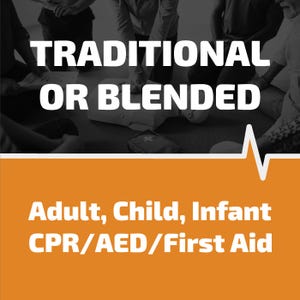
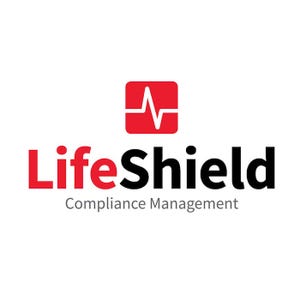
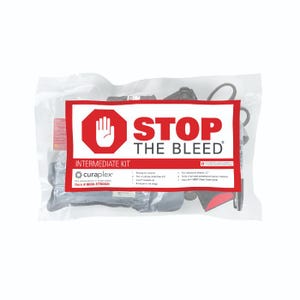
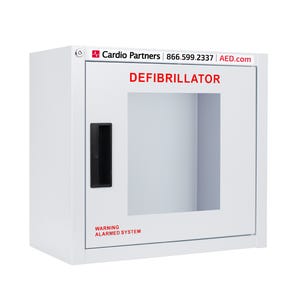
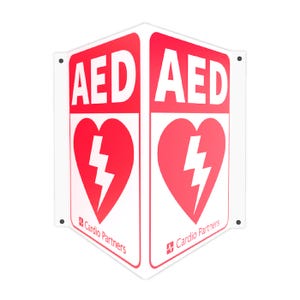
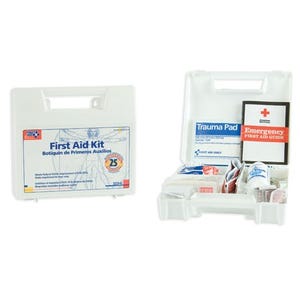
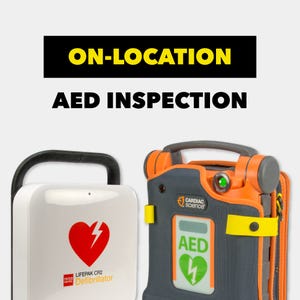
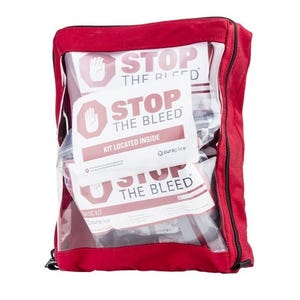
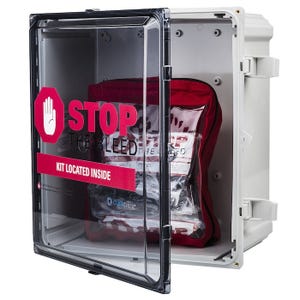
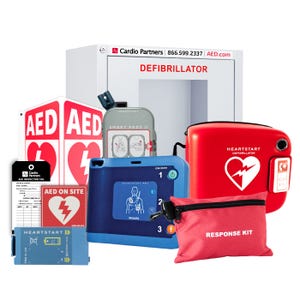
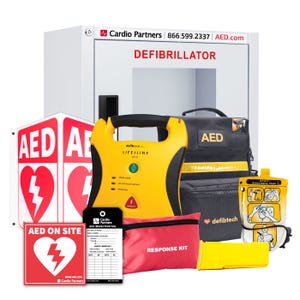
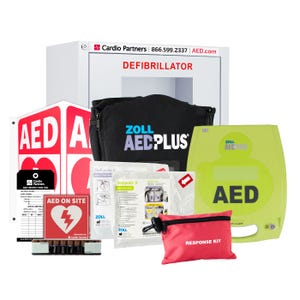
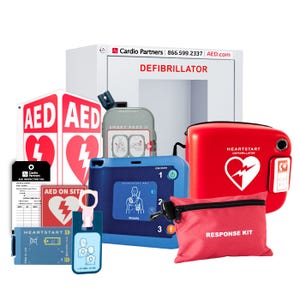
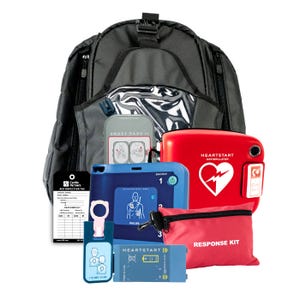
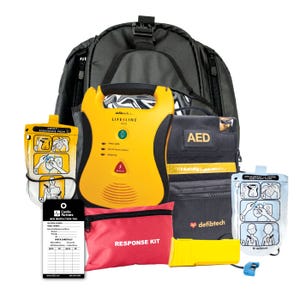
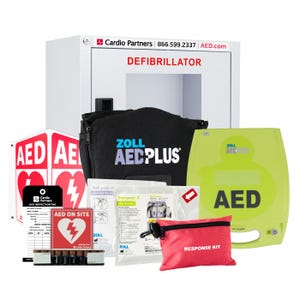
 CALL US:
CALL US: